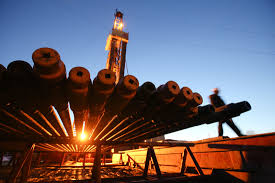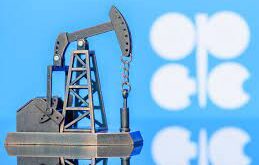With Iraq’s oil production in August hitting an all-time record high of 4.97 million barrels per day (bpd). according to local Iraqi sources. the country is virtually at the maximum oil production level that its current oil exporting infrastructure can handle. Moreover. this figure. impressive though it is. is still a long way off Iraq’s latest oil target production of 6.2 million bpd by the end of 2020 and 9 million bpd by the end of 2023. In order to monetize these flows for its hard-pressed budget and encourage further development of oil fields by international oil companies (IOCs). Iraq last week announced two key projects.
The first of these is an idea that has been mooted since the removal of Islamic State from Iraqi territory and gathered momentum after the indicative vote for independence by Iraq’s semi-autonomous region of Kurdistan in 2017. This idea is the resuscitation – and further build-out – of the Baghdad-controlled pipeline that will transport around 1.1 million bpd of crude oil from the Baghdad-controlled Kirkuk fields (in the Kurdistan region) to the Turkish port of Ceyhan. This would allow for the onward export and monetisation of Iraqi oil (and later gas) into the rest of Europe.
Before Islamic State ran riot across Iraq. there had been plans to expand the capacity of the Kirkuk to Ceyhan Pipeline. also called the Iraq-Turkey Pipeline (ITP). which is a misleading nomenclature. as it actually consists of two pipes. One of these has a 46 inch diameter pipe. with a nameplate capacity of 1.1 million bpd. which has long been subject to attacks from various groups even before Islamic State. including local tribes and Kurdish militants.
The other was a 40 inch diameter pipe. with an initial 0.5 million bpd nameplate capacity. This was subsequently built-out by the government of the Kurdistan region (the KRG). initially to handle 0.7 million bpd and then. purportedly. to a nameplate capacity of 1 million bpd. The ‘KRG pipeline’ is nonetheless a fully-functioning single side track running from the Taq Taq field through Khurmala. and then running into the Kirkuk Ceyhan pipeline in the border town of Fishkhabur. This has been subject to occasional politically-motivated stoppages. especially after the Kurdistan ‘yes’ vote on independence. but has broadly run according to KRG plans.
The adjunct part of Baghdad’s new plan. which has been agreed in principle with the government of Turkey. according to various sources spoken to by OilPrice.com. is that in addition to making good on the damaged sections of the pipe. a further smaller pipeline will be added that allows Baghdad to connect up oil output from the southern and central fields. not just from the fields in the Kirkuk region.
This idea had previously met with resistance from Russia. which did not want the influence of its corporate proxy. Rosneft. in the north undermined as swing player in determining Iraqi oil flows into Europe. Now. though. with the export route into Syria also in play. as exclusively reported by OilPrice.com. Russia believes that it has substantial control over the south as well. both directly and via Iran’s enduring influence over its neighbour. and has withdrawn its opposition to the pipeline build-out.
In the same vein of dramatically increasing its oil export capabilities. Iraq has also just signed an agreement with Dutch marine construction firm. Royal Boskalis Westminster. to build an artificial island south of the Al-Basrah offshore terminal (ABOT) in the Persian Gulf. This follows the recent decision by Iraq’s Oil Ministry to reactivate its pre-Islamic State plans to construct at least a further 12 full-time operational storage tanks and blending facilities in and around Al-Fao. The longer-term aim for the Al-Fao station is to have 24 storage tanks each of 58 thousand cubic metres. for a total capacity of more than 8 million barrels.
This occurred at shortly after the ministry announced that discussions were well advanced with BP and Eni to run a US$400 million project to replace two old seabed pipelines. including one feeding the other main offshore terminal at Khor al-Amaya (KAAOT). In terms of oil flow transportation to export. acting as conduits between Al-Fao and the offshore terminals of ABOT and KAOOT. there are now five single-point moorings (SPMs) that are capable of handling current volumes. OilPrice.com understands.
According to comments last week from Iraq’s Oil Ministry. the new artificial island project (including housing for 300 people) will be located 4 nautical miles south of the ABOT. An export terminal would be attached to the island. and include four jetties. which would have loading facilities for up to four very large crude carriers at a time. each capable of holding up to 320.000 deadweight tonnage.
This ties into the plans to expand the Fao station. as the newly expanded station would be connected to it by two new pipelines and wits increased capacity for light and heavy oil grades would be pumped to the new island for export. In sum. the Oil Ministry expects that the new island and related plans will allow it to almost double its export capacity within three years.
 Iran Energy News Oil, Gas, Petrochemical and Energy Field Specialized Channel
Iran Energy News Oil, Gas, Petrochemical and Energy Field Specialized Channel




